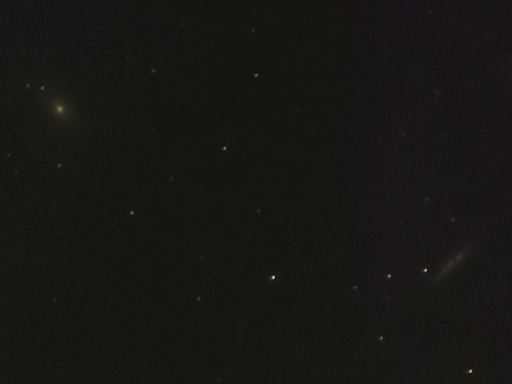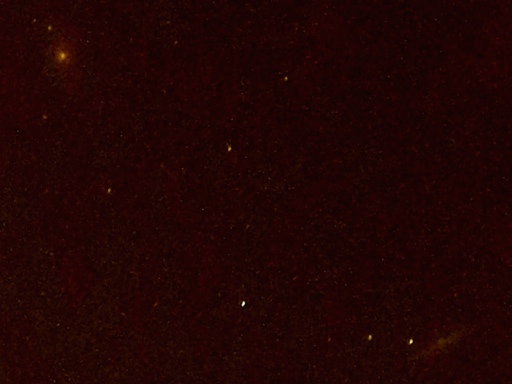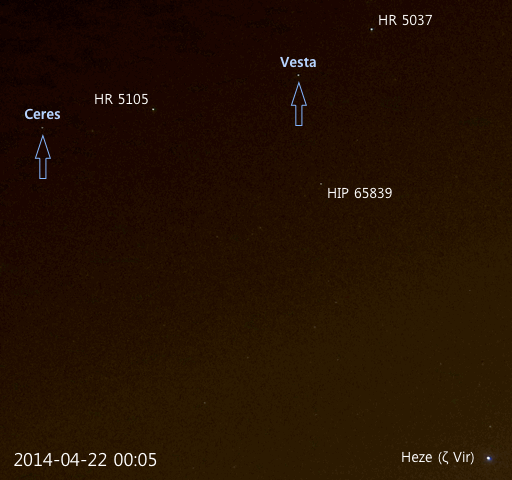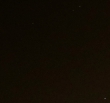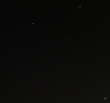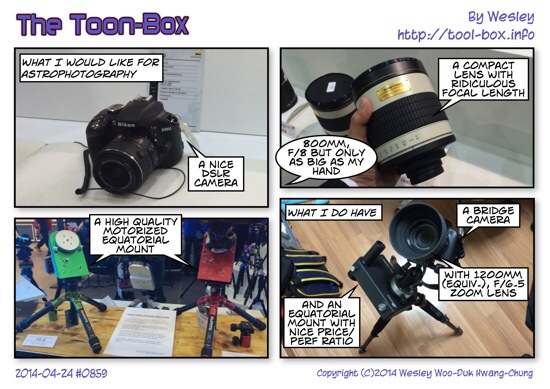Bode's & Cigar Galaxies, 2nd try
Posted by Wesley onOn the second attempt to photograph Bode's Galaxy (M81) and Cigar Galaxy (M82), I managed to put the lens hood on. The sky itself wasn't really darker - in fact, quarter moon was up in the sky - but this seem to have reduced the background red glare from the street lights. I should have thought of this sooner.
Anyways, the images now have blacker background, making the galaxies look more clear and natural. Taking multiple shots and stacking them improved the looks even further. Click on the image to see the version in original resolution.
Device: Canon SX50 HS
Settings: 484mm (70% size) - ISO 100 - 300s - f/5.6
Filters: None
Time: 2014-05-06 23:29 to 2014-05-07 00:15 KST
Location: Suwon, Korea
8 photos stacked with RegiStax 6.1.0.8
Defined tags for this entry: astronomy, Bode's Galaxy, Canon SX50 HS, Cigar Galaxy, galaxy, iOptron SkyTracker, star
